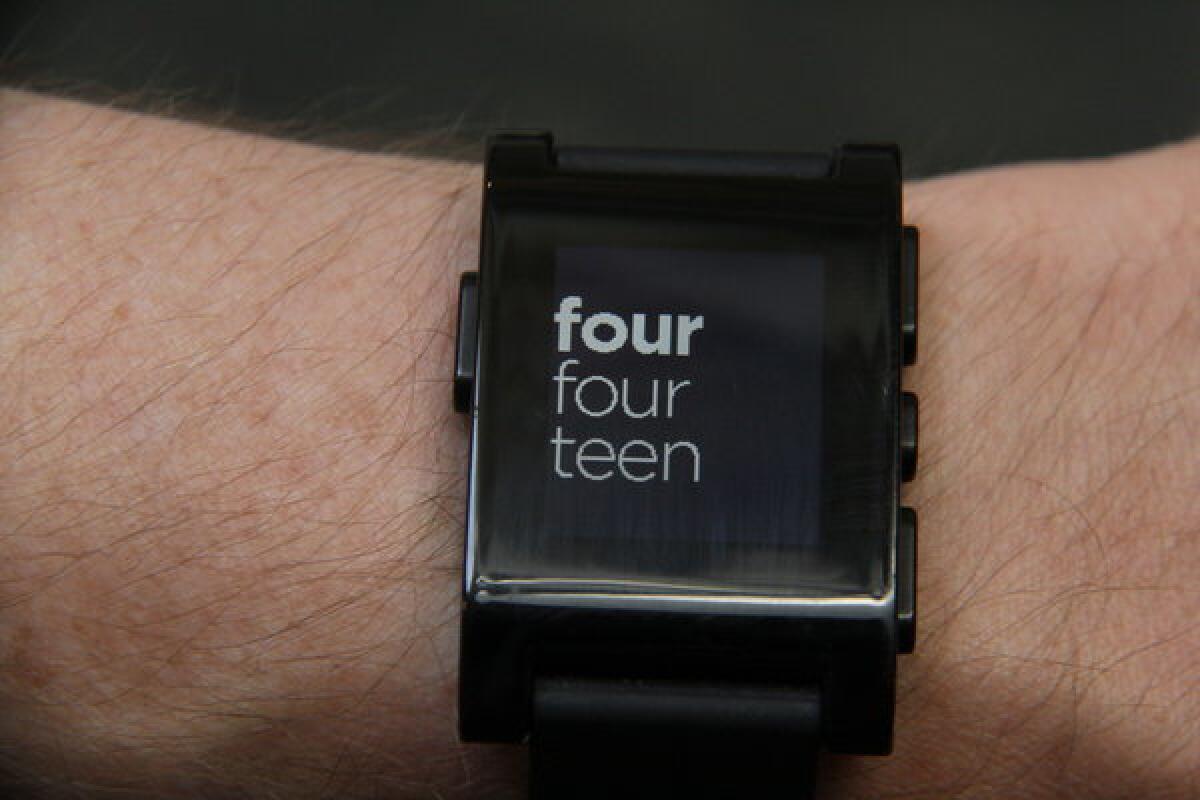Why smart watches might not be a hit among millennials

Young adults tend to be early adopters of new technology. But as Samsung Electronics Co. gets ready to unveil its Gear smart watch next month, it could run into a barrier among young users who have grown up with time-telling smartphones in their pocket instead of watches around their wrists.
“A lot of the millennial behavior is transitory,” said Jeffrey Cole, director of the Center for the Digital Future. “But as people age, they still are not wearing watches and we’ll begin to find out next month if that behavioral change is transformational.”
The center, affiliated with the USC Annenberg School for Communication and Journalism, has been tracking the same group of people for 13 years. And that annual study has given the think tank long-range insights into changing consumer behavior.
PHOTOS: Google Glass re-imagined
This year, Cole said questions about wearables -- computing devices that are worn rather than held -- are starting to emerge.
“We’re preparing for the invasion onto our body,” he said.
The results, which fall in line with other market research surveys, show little interest in devices such as Google Glass, Nike’s Fuel band, Fitbit and smart watches among millennials. About 3% of respondents are using smart watches, Cole said.
“People right now don’t think they want wearables,” he said. “People also don’t realize what they want, and we believe having the Internet right at our level 24/7 is going to be a compelling proposition.”
The emerging problem is that everyone’s starting to dig in their heels against privacy intrusions and the blurring lines between work and play. Having a talking, tracking and texting watch isn’t about to make things easier for consumers.
“Technology is a fundamental part of people’s lives, but we’re working for balance,” Cole said. “Nobody wants to ban the stuff, but we need to create boundaries.”
About 45% of people surveyed by the center said they can spend more time with family and friends because technology allows for working remotely. Still, 20% resent working from home and 31% said technology has made finding that balance harder.
Gadget manufacturers could help by improving features such as user profiles and account switching to help people segregate work and personal tasks. A smart watch, for example, could automatically stop corporate email notifications during lunch or while the device’s sensors determine that the person is exercising.
Cole recounted a button on his old Palm Treo that needed one flick to turn off the ringer -- something that takes several taps on some newer devices. That could explain why a slowly growing number of survey respondents, now 25%, say they struggle to figure out new technology.
“You don’t get instruction manuals anymore,” Cole said. “To really understand your smartphone, you would need 300 pages and days of training.”
But he said the solution to the tech invasion would be more about the introduction of new social norms than technical fixes.
Setting appropriate times to take pictures with wearable devices could be one area in need of a norm. The Samsung Gear watch will reportedly include a 2-megapixel camera. That would make it a rival of Google Glass in the realm of ways to sneakily take a picture.
Cole said there are “strong suggestions” that young adults’ attitude about privacy is starting to change as they enter their 30s. It’s similar to how they start to prefer email and other slower-moving methods of communication rather than instant messaging as they become immersed in other responsibilities.
“They are working harder and their social lives are interrupted by technology,” Cole said. “Now, they want to find the benefits without the disadvantages.”
ALSO:
Fashion models put on Google Glass for Vogue
Samsung’s smart watch to be unveiled Sept. 4, report says
Apple iPhone rumors: Gold iPhone, China Mobile, iPhone 5 dead







